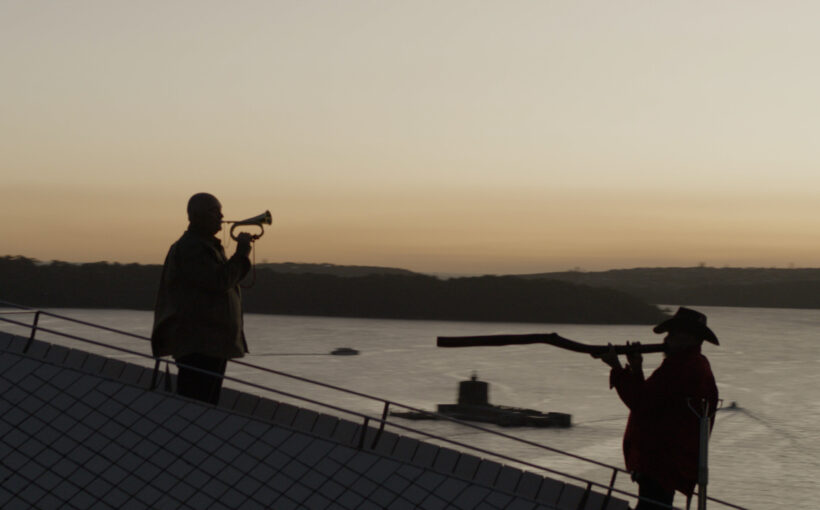Today is Remembrance Day, when Australia commemorates members of its armed forces who have died in wars, conflicts and peacekeeping operations.
Adding extra significance to this year's event is a touching new version of The Last Post in acknowledgement of First Nations veterans.
The new version of the traditional military bugle call – The Last Post (Winds of Change) – will be performed by didgeridoo player Mark Atkins and jazz musician James Morrison.
READ MORE: Daring World War II raid paved the way for elite Australian troops
It will be released at 11am today through the social networks of the Sydney Opera House and will be the first time the piece of music has been performed with a didgeridoo alongside a bugle.
The performance is a reminder of the sacrifice of First Nations soldiers who served in World War I with the Australian and New Zealand Army Corps.
Their contribution was often not acknowledged or given the recognition it deserved.
For Atkins, the new version of The Last Post has personal significance.
"My grandfather on my father's side served for four years as a machine gunner in the First World War, which had a 20 per cent chance of survival," he said.
"I also have uncles and aunties that served on my mother's side.
"The difference was when my aunties and uncles returned, they were not allowed to go into the bars, clubs, march or gather with the Australian soldiers or be together to honour and remember the fallen that they fought alongside.
"This new arrangement was created to help ensure memories of the First Nations soldiers and Anzacs who fought side by side live on."
READ MORE: Australian pilot's ultimate act of bravery celebrated 80 years on
About 1000 Aboriginal and Torres Straits Islanders served in the Australian military during World War I.
Later in World War II, more than 3000 answered the call of their country.
But on their return from deployment, they were unjustly treated: banned from RSL membership, refused veteran land settlements and denied military funerals.
Morrison said the new version of the Last Post was about acknowledging all Australian soldiers without changing the original piece.
"It's bringing things together; a great tradition that's already there with another much older tradition, and blending them, and it's such a powerful message because of that," he said.
This year's Remembrance Day National Ceremony at the Australian War Memorial will be broadcast live on television, as well as being live-streamed on the memorial's Facebook page.
What is Remembrance Day?
Remembrance Day marks the end of fighting in World War I on the Western Front on November 11, 1918.
Formerly known as Armistice Day – in reference to the German surrender in 1918 – the name was changed to Remembrance Day in 1945.
Every year, one minute of silence is held at 11am (local time) on November 11 in Australia and other Commonwealth nations.
The red poppy is the best-known symbol of remembrance.
On the mud-soaked battlefields of northern France, the wild flower grew abundantly after the close of World War I.
What events are held?
Commemorative services are held in Australia at memorials, schools and community centres today.
The national ceremony is organised by the Australian War Memorial in Canberra.
Across Australia, everyone is welcome to attend a Remembrance Day service.
They are free and you don't need to be a Returned and Services League of Australia (RSL) member to attend a service at your local sub-branch.
As part of the commemorations, the Sydney Opera House has been lit with the symbolic red poppies.
What happens at a Remembrance Day service?
Flags are lowered to half-mast about 10.30am (AEDT) before a service starts at 10.45am (AEDT) and the catafalque party will mount the cenotaph and take their positions.
Typically, the service will start with an Acknowledgement of Country, welcome speech, and words of experience or reflection from a veteran or service personnel.
After this, it's common that a hymn, prayer or reading is shared before dignitaries and other guests of honour lay wreaths or poppies.
It's customary to recite The Ode, play the Last Post, and observe one minute of silence.
The minute's silence concludes with the playing of The Rouse and a designated spokesperson saying the iconic words, "lest we forget".






